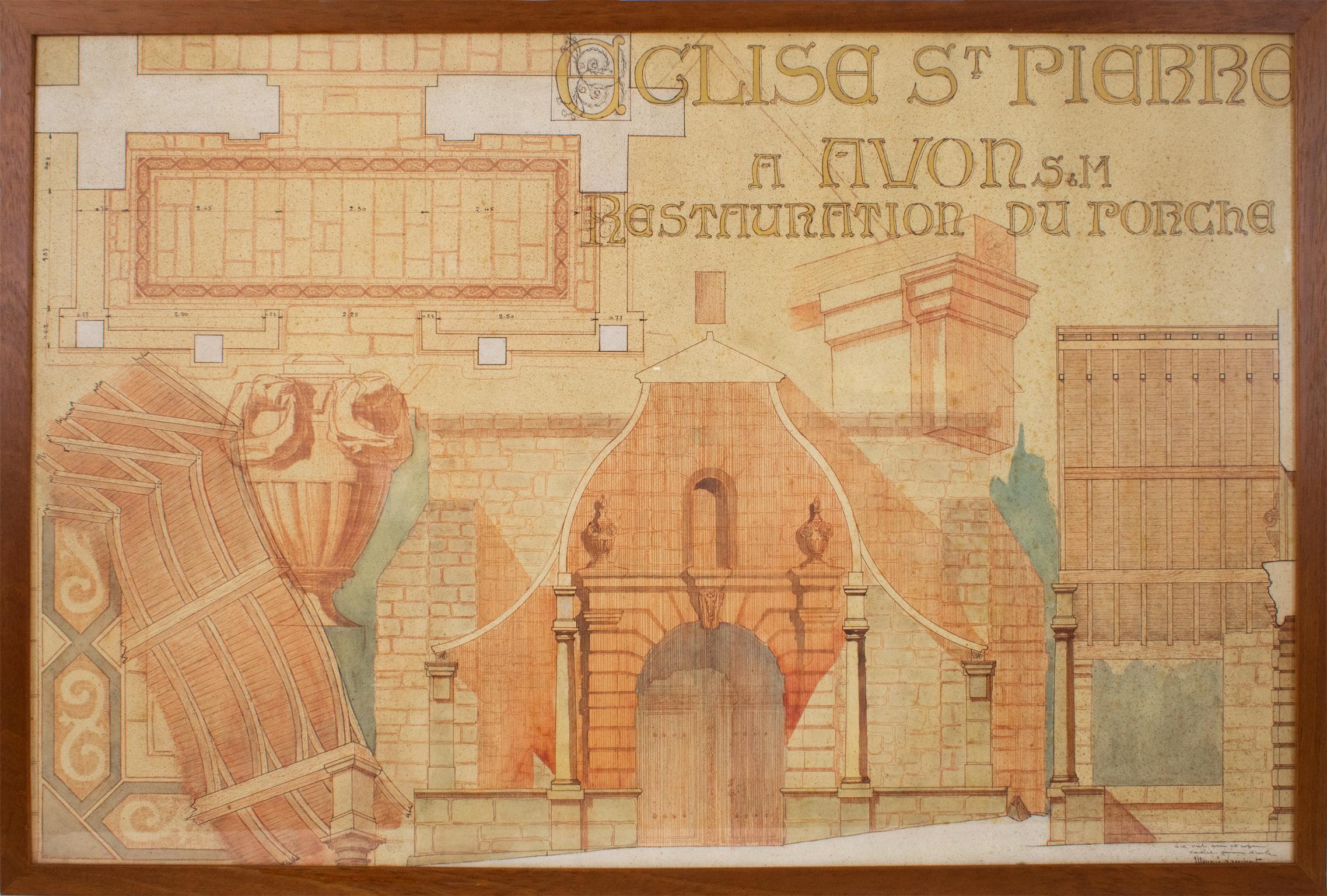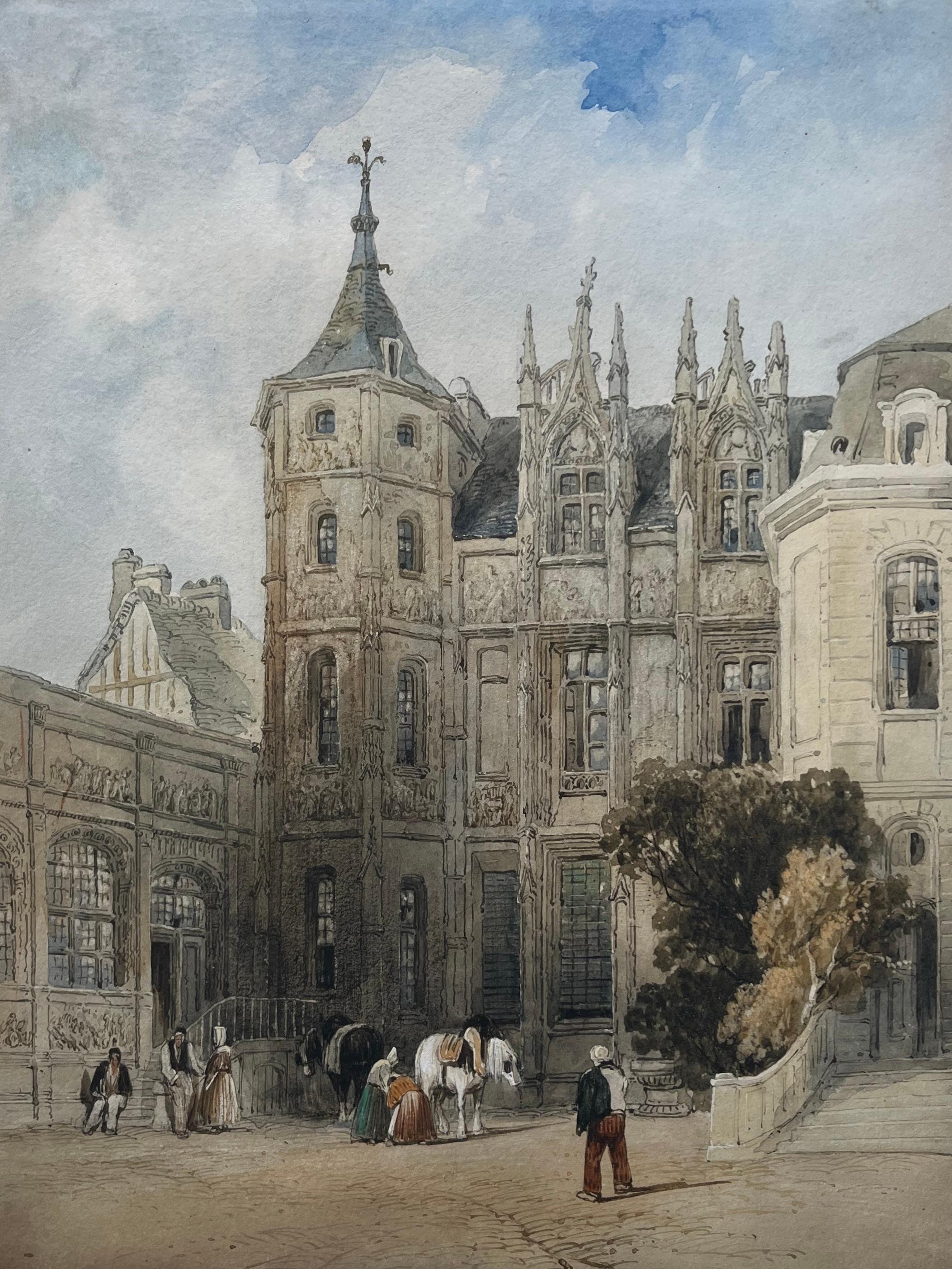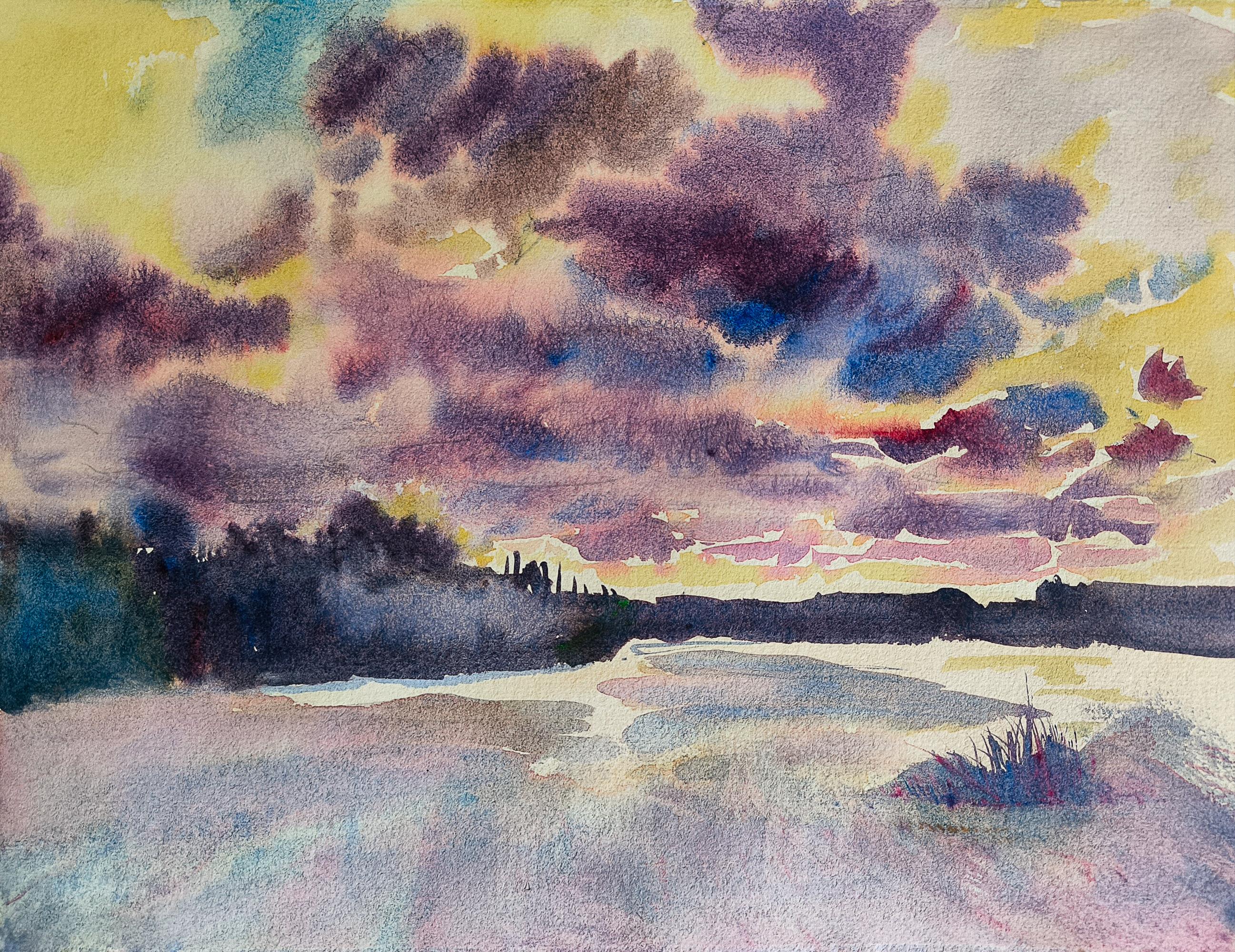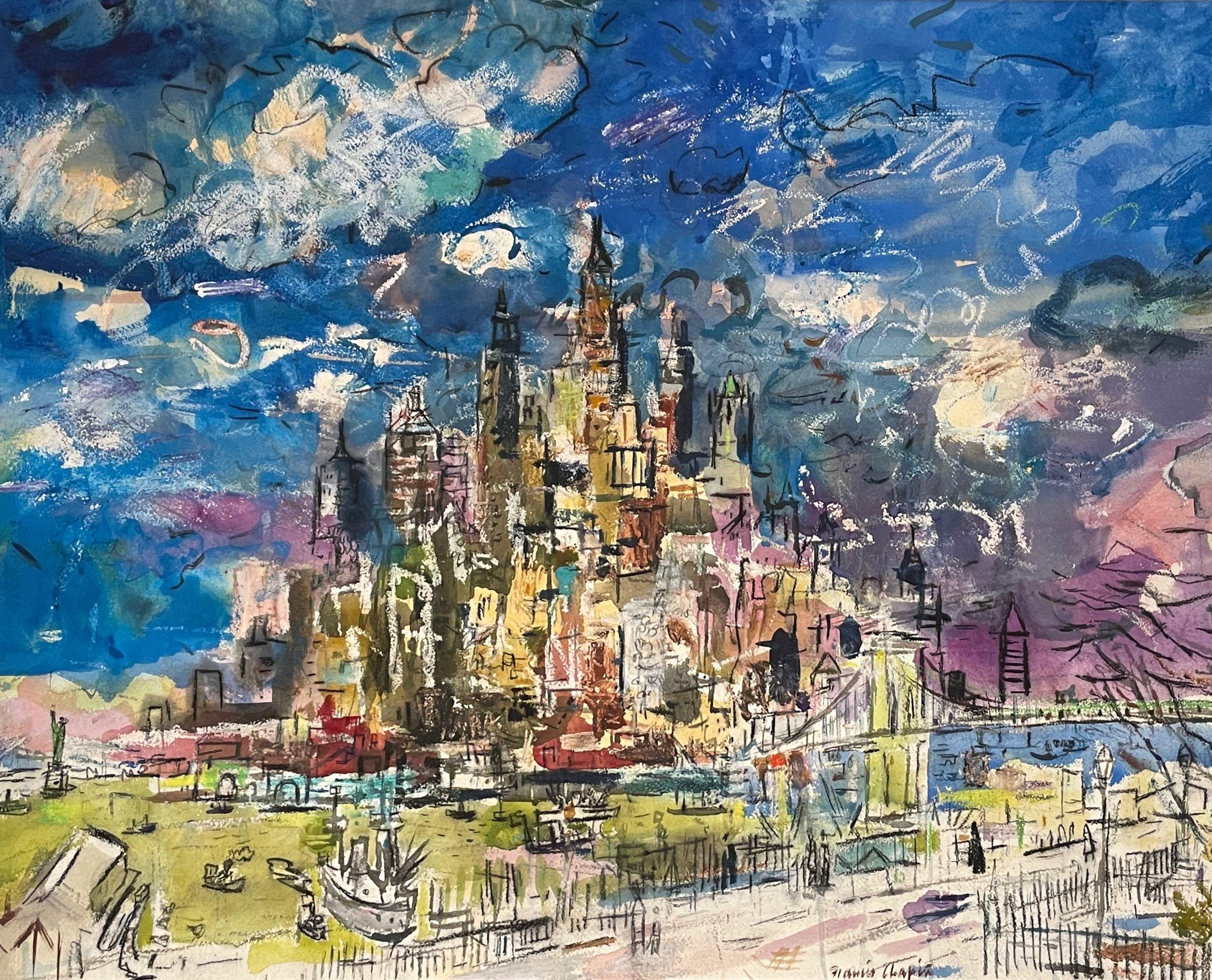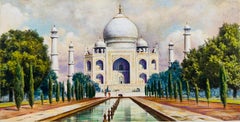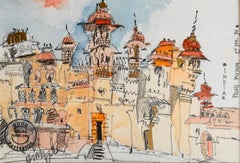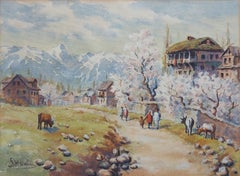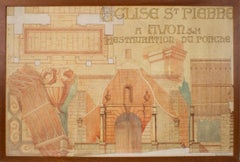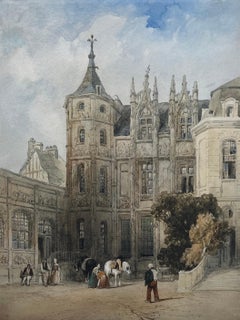Artículos similares a Calcutta India 1841 Historically Rich Watercolour First Opium Wars Empire Rare
¿Quieres más imágenes o vídeos?
Solicita imágenes o vídeos adicionales al vendedor
1 de 17
Francis Meynell Calcutta India 1841 Historically Rich Watercolour First Opium Wars Empire Rare1841
1841
Acerca del artículo
A historically rich watercolour painting, Calcutta 1841
Francis Meynell (1821-1870)
Calcutta from Garden Reach; HMShip Calliope Saluting
Watercolour on paper
Date: 1841
Signed bottom left; F Meynell, Titled on verso in pencil
Mounted Size: 18.2” x 27” (46cm x 68.5cm)
Image Size:12.1” x 21.45” (31 x 53.6cm)
Provenance: Private UK collection.
‘And the more I explored the background, the clearer it became that the flow of seaborne traffic in the period I was writing about, the first half of the 19th century, was not primarily between India and the West as I had imagined, but between India and China, -or, rather, between one particular place in China, a City called Canton.’
Amitav Ghose - Smoke and Ashes; A Journey through Hidden Histories (Chapter 1 - There be Dragons, Fourth Estate, India, 2023)
Calcutta from Garden Reach; HM Ship Calliope saluting, 1841
At first glance this early 1841 watercolour painting would appear to follow the conventions of the day and present an everyday scene of the rapidly expanding port of Calcutta, to be shared back home in London with audiences eager for images and news of developments in India. This was a time when photography was still very much in its infancy and audiences in the West could only begin to imagine the sights of India through paintings such as this fine watercolour.
However this historically involved painting shows a definitive event in a specific history. As we know there are always multiple sides to every story and this narrative allows us to consider the other contemporaneous histories at this point in India. As Amitav Ghose’s quote lays out, in the 1840’s the majority of seaborne traffic was between India and China. Most importantly it was not just the British travelling East but Indian traders as well. Amongst these groups were the Parsi business families, selling Indian opium to China and setting up the financial family barons of Bombay as it is today. This painting offers an interesting starting point for exploring other histories of the time.The focus of this painting by Francis Meynell dates very specifically to August - September 1841. It shows HM Ship Calliope returning from Canton and the 1st Opium War, triumphantly carrying the bulk of the $6 million dollar ransom in silver bullion, paid by the Chinese to the British. (Clowes, W.L. The Royal Navy: A History from the Earliest Times to the Present. In 7 vols. Vol. 6. London, 1901. P. 294). The image shows a waterway full of trade and activity denoting power and politics.
Through the eyes of the young Lieutenant, at the time aged 20 when he made this artwork, he points us to the administrative centre of Calcutta in all its glory. Painted from Garden Reach on the River Hooghly and the entrance to Calcutta Port our gaze is directed towards Government House, it tells one story of empire and what was seen by the British as advancement, discovery and colony in every possible manner. In style it retains a certain elegance and grandeur, possibly from the young artist’s training back home in London, as he tries to combine all these factors into the one image.
Meynell makes no mistake as he steers our view to the centre of the exciting progressive administrative capital with its grand buildings, governments houses, Cathedrals and docks. Business is thriving and the scene is exciting for the 20 year old Lieutenant who painted this picture and was very much a part of the scene. Having survived the devastating war in China he returns triumphantly on the British war ship which is pulled into the harbour by one of the new steam-powered tugs. Everything in this painting screams success, power and progress in the eyes of the young artist. Titled on the back in pencil, Calcutta from Garden Reach; HM Ship Calliope Saluting, the title confirms this is a painting celebrating military power and trade. The blue Ensign flies proudly, a symbol of the British Navy in India at this period.
To the left of the picture we see the building of the New Botanical Gardens, pointing to the new scientific discoveries being made of the flora and fauna of the Subcontinent. Hastings Bridge to the right demonstrates advancements in engineering. On the water are different forms of transport, the boats carrying both people and freight. Most significantly, from the eyes of the artist it possibly celebrates everything the young military men believed they had been fighting for. Having just returned from one of the bloodiest wars in Canton, the first Opium War, the painting shows a sense of order, of calm and of a city that knows its worth. Ultimately, there is the main focus, the triumphant entry of The Calliope, his ship, bringing ‘home’ the goods: the silver bullion needed to pay the army and feed the troops. A stark contrast to the terrifying scenes he had just come from.
At the time this picture was painted there were a number of European artists working in Calcutta but they were mostly employed in portrait painting or in producing the large picturesque landscape views that were proving popular and financially viable. Looking through most important Museum collections of watercolour paintings of Calcutta in this early 19th century period, paintings of this type are few and far between.
Francis Meynell, who discreetly signed the painting, bottom left, is well documented in the history books (Allen, J. The New Navy List and General Record of the Service of Officers of the Royal Navy and Royal Marines. London, 1853. P. 146). The Royal Maritime Museum in London further holds documents that record his career together with a sketchbook of paintings made on a future voyage to the Americas and letters back to his family. To date very few of his India paintings have come to light but this painting is of a scale, (the wide, quite substantial format also utilised by landscape artists such as Sita Ram and William Prinsep) to suggest he was a confident young painter. The very fine detail of the skyline appears to be an accurate rendition of the significant buildings and the depth of detail is almost akin to that of a miniature painter. Having considered at length, I do not think this painting is faded. To our contemporary eyes the palette is sparse but brown and blue are colours favoured by many landscape artists at this period.
Condition:
The watercolour would appear to have been laid to board in recent times. It has been professionally mounted. There are no rips or tears. Sadly with this matting the title is not currently in view but there is an image attached. The painting has been laid to acid free board. It would be possibly for a professional conservator to lift the watercolour but this is not necessary in terms of preservation.
Sobre el vendedor
5,0
Vendedor profesional aprobado
Todos los vendedores superan estrictas normas de autenticidad y confiabilidad
Establecido en 1999
Vendedor de 1stDibs desde 2021
61 ventas en 1stDibs
- EnvíoRecuperando presupuesto…Envío desde: Norfolk, Reino Unido
- Política de devolución
Partes de esta página se han traducido automáticamente. 1stDibs no puede garantizar la exactitud de las traducciones. El inglés es el idioma predeterminado de este sitio web.
Garantía de autenticidad
En el improbable caso de que haya algún problema con la autenticidad de un artículo, ponte en contacto con nosotros en un plazo de 1 año para recibir un reembolso total. DetallesGarantía de devolución de dinero
Si tu artículo no es como se describe, sufre daños durante el transporte o no llega, ponte en contacto con nosotros en un plazo de 7 días para recibir un reembolso total. DetallesCancelación dentro de las 24 horas
Tienes un período de gracia de 24 horas para reconsiderar tu compra, sin preguntas.Vendedores profesionales aprobados
Nuestros vendedores de primera clase deben cumplir estrictos estándares de servicio para mantener la integridad de nuestros anuncios.Garantía de igualación de precios
Si encuentras que un vendedor publicó el mismo artículo por un precio menor en otro lado, igualaremos ese precio.Entrega global de confianza
Nuestra red de transporte de primera ofrece opciones de envío especializado en todo el mundo, que incluye envío personalizado.Más de este vendedor
Ver todoIndia Taj Mahal Acuarela original para tarjeta de cigarrillos icónica de Churchman c1910
Acuarela original para el icónico Churchman's
Tarjeta Cigarrillo del Taj Mahal
Acuarela sobre papel
c 1910
Tamaño de la imagen: 7 x 14 cm
Procedencia: Colección privada del Reino U...
Categoría
principios del siglo XX, Otro estilo de arte, Dibujos y acuarelas de pai...
Materiales
Papel, Acuarela
India Acuarela RCA Arquitecto Pintura Palacio Udaipur Lago Viajes Naranja Azules
Hay algo cautivador en los dibujos y bocetos hechos por arquitectos. Suelto y lleno de vida, este delicioso pequeño estudio, hecho sobre la marcha, capta maravillosamente la esencia ...
Categoría
Década de 1990, Contemporáneo, Dibujos y acuarelas de paisajes
Materiales
Acuarela, Papel de archivo, Lápiz
India 19th c British Landscape Listed Artist Alfred Crowdy Lovett Botanical Palm
Alfred Crowdy Lovett C.B.E (British, 1862-1919)
Palm Tree & Coconut of Palm (in pencil on verso), single palm signed top right
Watercolours on paper, mounted
Single palm: Mount si...
Categoría
Fines del siglo XIX, Posimpresionista, Pinturas de paisajes
Materiales
Papel, Acuarela
Valle de Cachemira Almendro en Flor Dina Nath Walli Paisaje de Montaña India Arte
Dina Nath Walli (1908-2006)
Almendro en Flor, Cachemira
Acuarela sobre tabla
c 1960
Tamaño enmarcado: 42,8 cm x 52,8 cm
Tamaño de la imagen: 27,5 cm x 38 cm
Firmado y fechado en 1970...
Categoría
mediados del siglo XX, Impresionista abstracto, Pinturas de paisajes
Materiales
Tablero, Acuarela
Colección Madrás de dibujos a la acuarela sobre papel y cartulina India principios del siglo XX
Colección de tres grandes acuarelas, dos de ellas enmarcadas. Con otros 15 dibujos a tinta de la fabulosa artista irlandesa Ismaena R Warren, prolífica ilustradora de libros. Todo fa...
Categoría
principios del siglo XX, Otro estilo de arte, Dibujos y acuarelas de pai...
Materiales
Papel, Acuarela, Tinta china, Acrílico
India 3 X Bocetos de campo de la frontera noroeste de Cachemira del siglo XIX Lago Manasbal, Cachemira
3 Bocetos sobre el terreno
Frontera noroeste de la India : Lago Manasbal, Cachemira
Artista: Desconocido
Medio Pluma y tinta
Creada: 1890s
Tamaño: 13 x 18 cm cada uno
Un encantador...
Categoría
Década de 1910, Otro estilo de arte, Dibujos y acuarelas de paisajes
Materiales
Papel, Tinta, Lapicera
También te puede gustar
Bocetos de arquitectura Dibujo de estudio, Iglesia Romane en Francia por Maurice Lambert
Estudio arquitectónico para la restauración de la iglesia Saint-Pierre de Avon, Francia.
Este singular estudio arquitectónico se creó como parte de un proyecto de renovación de una i...
Categoría
Fines del siglo XIX, Académico, Dibujos y acuarelas de paisajes
Materiales
Tinta, Acuarela, Lápiz, Papel de archivo
Cotman, Escuela de Norwich, Acuarela inglesa temprana de Rouen, Francia
Por John Sell Cotman
Una bella composición que capta uno de los edificios más conocidos de Ruán, ciudad muy popular entre los pintores de acuarela de principios del siglo XIX. John Sell Cotman pintó este...
Categoría
principios del siglo XIX, Victoriano, Dibujos y acuarelas de paisajes
Materiales
Papel, Acuarela
"Cordillera de los Andes Perú Sudamérica, " Joseph Yoakum, Paisaje de arte popular negro
Por Joseph Yoakum
Joseph Yoakum
Cordillera de los Andes Perú So América, circa 1960s
Lápiz de color y bolígrafo sobre papel
7 1/4 x 10 1/2 pulgadas
Procedencia:
Galería Karen Lennox, Chicago
Colecció...
Categoría
Década de 1960, Arte popular, Pinturas de paisajes
Materiales
Papel, Acuarela, Bolígrafo, Lápiz de color
17.600 US$ Precio de venta
Descuento del 20 %
"Góndolas en el muelle, Venecia, Italia" Louis Wolchonok, Barcos en la escena del puerto
Por Louis Wolchonok
Louis Wolchonok (1898 - 1973)
Góndolas en el muelle, Venecia, Italia, 1928
Acuarela sobre papel
Vista 18 x 23 1/2 pulgadas
Firmado y fechado abajo a la derecha
Louis Wolchonok fue a...
Categoría
Década de 1920, Posimpresionista, Dibujos y acuarelas de paisajes
Materiales
Papel, Acuarela
2000 US$ Precio de venta
Descuento del 20 %
"Vasta extensión de agua" - Paisaje sereno en acuarela
Sumérgete en el mundo sereno y contemplativo de "Vasta extensión de agua", una cautivadora acuarela de la consumada artista Linda Clerget. Esta obra muestra la maestría de Clerget co...
Categoría
Siglo XXI y contemporáneo, Impresionista, Dibujos y acuarelas de paisajes
Materiales
Acuarela, Papel hecho a mano
Una Dinámica Escena Moderna de Mediados de Siglo en Manhattan, Nueva York por Francis Chapin
Por Francis Chapin
Una acuarela grande y dinámica de mediados de siglo de Lower Manhattan, Nueva York, del famoso artista de Chicago Francis Chapin (Am. 1899-1965). La imagen es acuarela, pastel y car...
Categoría
mediados del siglo XX, moderno estadounidense, Pinturas de paisajes
Materiales
Acuarela, Papel de archivo, Carbón, Pastel
